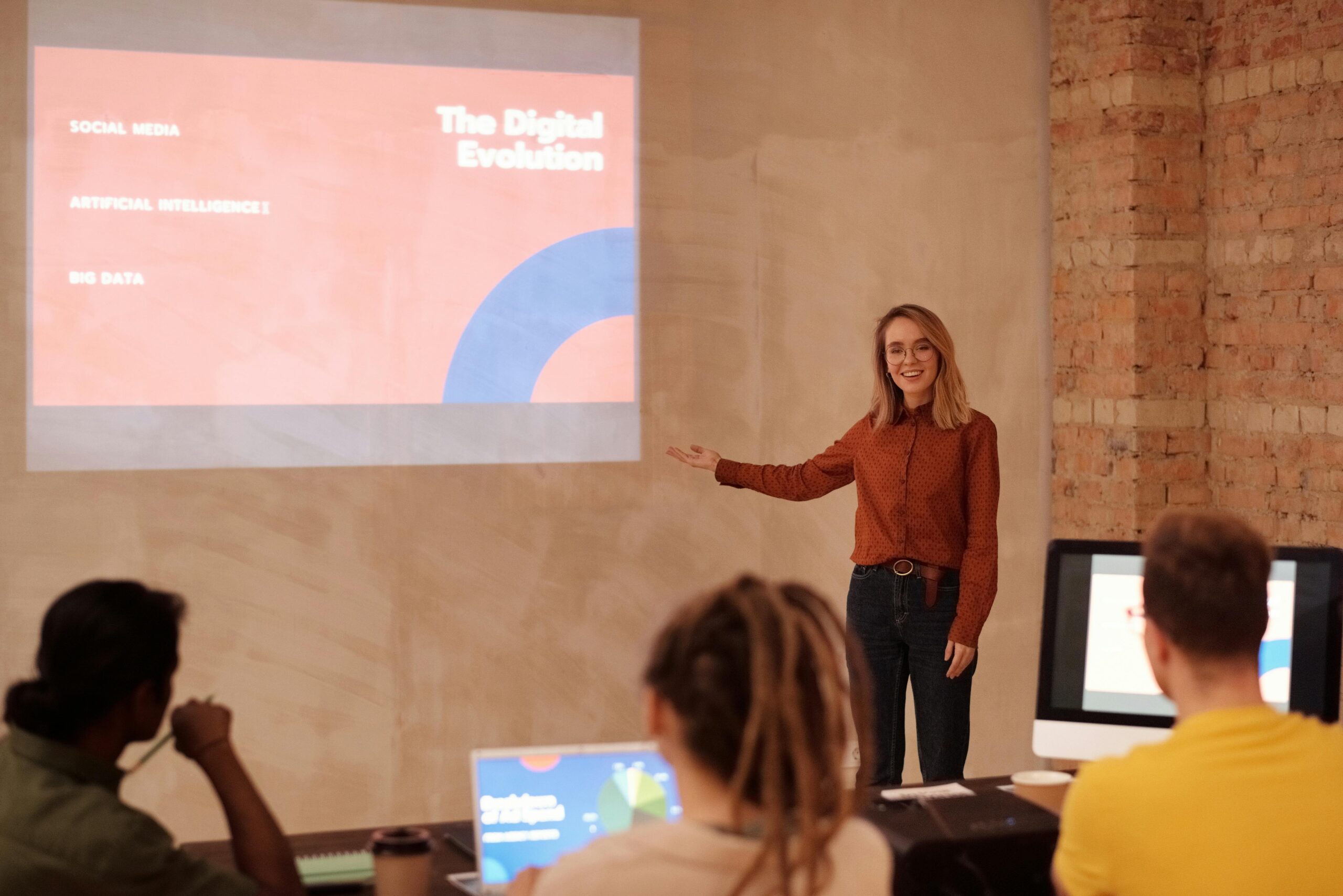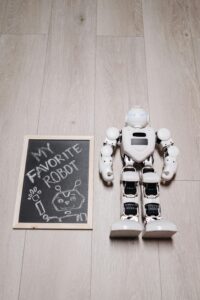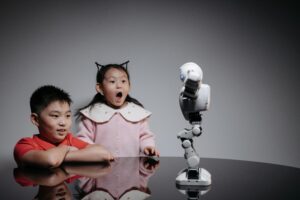The Role of AI in Education: Custom Learning Experiences
Table of Contents
-
Introduction
-
Why Personalization in Education Matters
-
How AI Delivers Customized Learning
-
Popular AI Tools in EdTech
-
Benefits of AI-Powered Custom Learning
-
Challenges and Concerns
-
Case Studies: AI in Real Classrooms
-
The Future of AI in Personalized Education
-
Final Thoughts
-
FAQs
1. Introduction
In the fast-evolving world of education, one-size-fits-all teaching methods are becoming outdated. Today’s students have diverse needs, learning styles, and paces. Artificial Intelligence (AI) is emerging as a revolutionary tool to address this complexity by offering custom learning experiences tailored to individual students. From intelligent tutoring systems to adaptive content platforms, AI is personalizing education like never before.
This article explores how AI is reshaping the education landscape, creating individualized learning paths, and empowering both educators and learners.
2. Why Personalization in Education Matters
Every student learns differently. Some are visual learners, others are more comfortable with text or hands-on experiences. Standardized education methods often fail to cater to this diversity. Personalization in education ensures:
-
Better student engagement
-
Improved retention of information
-
Reduced dropout rates
-
Enhanced academic performance
Custom learning paths allow students to progress at their own pace, repeat topics when necessary, and skip over concepts they’ve already mastered. AI helps make this level of personalization scalable.
3. How AI Delivers Customized Learning
AI leverages data analytics, machine learning, and natural language processing (NLP) to monitor and analyze student performance in real time. Here’s how it delivers personalization:
a. Adaptive Learning Platforms
These platforms analyze how a student interacts with content and adjust the difficulty, style, and pace of material accordingly. Examples include platforms like Knewton and Smart Sparrow.
b. Intelligent Tutoring Systems
AI tutors like Socratic by Google or Carnegie Learning provide real-time guidance by recognizing when a student is struggling and offering targeted support or hints.
c. Personalized Feedback
AI can instantly grade assignments, assess writing quality, and even detect plagiarism. Tools like Grammarly and Turnitin provide instant feedback that helps students improve without waiting for a teacher.
d. Chatbots and Virtual Assistants
Educational chatbots are available 24/7 to answer questions, clarify doubts, or assist with assignments. They are particularly useful for online learning environments.
4. Popular AI Tools in EdTech
Here are some notable AI tools and platforms driving personalized learning:
| Tool | Description | Use Case |
|---|---|---|
| Khan Academy | Uses AI to tailor content based on learning pace | Math, Science, Coding |
| Squirrel AI | Adaptive learning engine from China | Test prep, K-12 |
| Carnegie Learning | AI-driven math curriculum | Middle & High School |
| Querium | STEM tutoring using AI | Test Prep, College Readiness |
| Duolingo | AI-based language learning | Vocabulary, Grammar Practice |
5. Benefits of AI-Powered Custom Learning
a. Tailored Curriculum
AI evaluates a learner’s strengths and weaknesses to create a path that suits their academic needs and interests.
b. Real-Time Analytics
Educators receive live data on student performance, allowing them to intervene early if a student is falling behind.
c. Inclusivity
AI tools can accommodate learning disabilities and language barriers, making education more inclusive.
d. Scalability
A single AI platform can offer personalized education to thousands of students simultaneously—something traditional methods cannot do.
6. Challenges and Concerns
While AI in education brings significant advantages, there are also hurdles:
a. Data Privacy
Student performance data is sensitive. Misuse or lack of proper encryption can lead to privacy violations.
b. Bias in Algorithms
If AI systems are trained on biased data, they can reinforce stereotypes or leave certain students behind.
c. Cost and Accessibility
High-quality AI tools can be expensive or require strong internet connectivity—resources not available in all regions.
d. Reduced Human Interaction
AI should support, not replace, human teachers. Emotional intelligence and mentorship are still best delivered by humans.
7. Case Studies: AI in Real Classrooms
a. Georgia State University – Chatbots to Reduce Dropouts
The university implemented an AI chatbot called Pounce to answer thousands of student questions about registration, financial aid, and more. Result: 22% reduction in summer melt (students failing to enroll after acceptance).
b. China’s Squirrel AI – Tailored Tutoring at Scale
Squirrel AI provides real-time feedback and adaptive learning to millions of students across China, boosting scores and engagement without direct human oversight.
c. Arizona State University – AI-Driven Course Design
By analyzing student data, ASU customized its online course content, leading to increased completion rates and student satisfaction.
8. The Future of AI in Personalized Education
AI’s role in education is just beginning. Future trends include:
-
Emotion AI: Detecting student frustration or confusion via webcam and offering help
-
Voice-based AI: Tools like Alexa or Google Assistant used as tutors
-
Hyper-personalization: AI that considers mood, learning goals, time availability, and attention span
-
Gamified Learning: AI-based games designed to teach and reinforce concepts
-
Lifelong Learning Assistants: AI mentors that stay with a learner from school to employment
The education system is shifting from static curricula to fluid, learner-centric experiences powered by AI.
9. Final Thoughts
AI is no longer just a futuristic concept—it’s actively transforming how we teach and learn. From adaptive textbooks to real-time tutoring, the role of AI in creating custom learning experiences is clear and impactful.
While challenges remain, the benefits of AI in education—especially in personalizing the experience—are too significant to ignore. As technology continues to evolve, the future of education will be smarter, more inclusive, and deeply personalized.
Continued: The Role of AI in Education: Custom Learning Experiences
Real-Time Feedback and Assessment
AI enables real-time feedback loops that help both teachers and students. Traditionally, students wait days or weeks to receive feedback on tests or essays. AI-powered platforms now provide instant evaluations and suggest areas of improvement.
-
Grammarly and Quillbot offer immediate grammar and writing suggestions.
-
Tools like Turnitin check for originality and AI-generated content.
-
Math AI tutors like Socratic offer step-by-step feedback, fostering critical thinking.
This immediate response reduces cognitive load and enhances long-term retention by allowing students to correct their mistakes while the topic is still fresh.
AI-Powered Content Creation
AI is revolutionizing content creation for educators. Instead of spending hours preparing lesson plans, educators can now use AI platforms to generate:
-
Customized learning materials for different levels.
-
Quizzes and tests aligned with curriculum goals.
-
Visual aids like infographics or slideshows.
For example, tools like ChatGPT, Khanmigo, and MagicSchool.ai are being used to auto-generate educational content in multiple languages, formats, and difficulty levels—ideal for inclusive classrooms.
Predictive Analytics for Student Success
One of the most powerful applications of AI in education is predictive analytics. By analyzing student data—attendance, performance, engagement—AI can identify students who are at risk of falling behind.
Institutions can:
-
Alert teachers proactively.
-
Recommend additional resources or interventions.
-
Track progress and personalize future content.
For instance, IBM Watson Education helps schools identify struggling students before grades start slipping. AI acts as a preventive tool rather than a reactive measure.
Bridging the Gap for Students with Special Needs
AI tools help close the accessibility gap for students with disabilities. Here’s how:
-
Text-to-speech and speech-to-text help students with dyslexia or visual impairments.
-
Real-time captioning aids the hearing impaired.
-
Language translation breaks down language barriers.
Examples:
-
Seeing AI by Microsoft describes visual content for the visually impaired.
-
Voiceitt helps people with speech impairments to be understood by translating non-standard speech.
By incorporating these AI-powered technologies, inclusive learning becomes a reality.
Role of Chatbots in Student Support
AI-powered chatbots are now acting as 24/7 academic assistants. They can:
-
Answer student queries.
-
Help with assignment deadlines.
-
Navigate administrative systems (course registration, grading portals, etc.).
Some universities use custom AI chatbots trained on internal knowledge bases to offer seamless support. This reduces the workload on faculty and administrative staff while enhancing student satisfaction.
AI for Teacher Support and Development
Educators are benefiting from AI in ways beyond the classroom:
-
Professional development: AI curates personalized training paths for teachers.
-
Time-saving tools: From grading essays to preparing reports, teachers save time.
-
Classroom management insights: AI tools like Classcraft provide gamified learning and behavioral analytics.
In 2025, AI is as much a teacher’s companion as it is a student’s.
Case Study 1: Squirrel AI in China
Squirrel AI is a Chinese adaptive learning platform that creates ultra-personalized learning paths by analyzing how students respond to different types of questions.
Results:
-
Boosted test scores in underperforming students.
-
Reduced dropout rates.
-
Adapted content in real-time based on student behavior and emotions.
It demonstrates how powerful AI can be when integrated deeply into an educational system.
Case Study 2: Carnegie Learning in the USA
Carnegie Learning uses AI-driven math tutoring platforms powered by cognitive science. The software adapts each problem set to individual learners and includes AI-based hints if a student struggles.
Impact:
-
Students who used it outperformed traditional learners in standardized tests.
-
Teachers received real-time data about class-wide and individual student comprehension.
This shows how AI doesn’t replace the teacher—it amplifies the teacher’s capabilities.
Ethical and Privacy Considerations
With great power comes responsibility. AI in education raises several concerns:
-
Data Privacy: Student data must be securely handled. AI systems often require large datasets, raising questions about consent, ownership, and security.
-
Bias in AI: If the training data is skewed, the recommendations and outputs may be biased.
-
Over-reliance: There’s a risk of depending too much on AI, potentially replacing human elements of teaching that are irreplaceable, such as empathy and moral guidance.
To ensure ethical use, regulations like FERPA (Family Educational Rights and Privacy Act) in the U.S. are being extended to cover AI systems.
The Human-AI Hybrid Model
The future of education is not AI vs. teachers but AI + teachers. This hybrid approach allows:
-
AI to handle repetitive tasks, analytics, and personalization.
-
Humans to focus on mentorship, social-emotional learning, and creative facilitation.
In 2025, forward-thinking institutions are already training their faculty on how to collaborate with AI tools, not just use them.
Future Trends: What’s Next in AI-Powered Education?
1. Emotion AI (Affective Computing)
AI tools are being developed to understand student emotions via facial recognition, voice tone, and engagement metrics. If a student looks disengaged, the system may adjust the difficulty level or suggest a break.
Tools in this space:
-
Replika
-
Affectiva
-
Ellucian’s Ethos
2. Virtual AI Tutors in the Metaverse
Imagine learning biology by walking through a 3D model of the human body in the metaverse, guided by an AI tutor. With the convergence of AI and AR/VR, immersive learning experiences are taking shape.
Platforms experimenting here:
-
Meta Horizon
-
Engage XR
-
Virbela
3. AI-Powered Credentialing and Lifelong Learning
AI will redefine how we validate learning. Traditional degrees may give way to skill-based micro-credentials that AI systems can issue and track based on competency rather than time.
Blockchain + AI = Secure, transparent educational records.
Conclusion
AI is revolutionizing education by turning one-size-fits-all classrooms into customized learning ecosystems. From K-12 to universities and lifelong learning, AI tools are making education more efficient, inclusive, and effective.
The challenge for educators, policymakers, and developers is to use these tools ethically, equitably, and collaboratively—so that AI remains an assistant, not a replacement.
FAQs
Q1. Will AI replace teachers in the future?
No. AI is meant to support and enhance teachers’ roles, not replace them. Human elements like empathy, moral guidance, and social skills are irreplaceable.
Q2. Is AI already being used in schools?
Yes. Many schools use tools like ChatGPT, Khan Academy, Grammarly, and others for tutoring, grading, feedback, and more.
Q3. Are AI tools safe for students’ data?
Only if proper data governance and privacy regulations (like FERPA, GDPR) are followed. Always use trusted, vetted platforms.
Q4. Can AI adapt to different learning styles?
Absolutely. AI can personalize content based on learning speed, format preference (visual/audio), and comprehension levels.
Q5. How can educators get started with AI?
Start with easy tools like ChatGPT for writing assistance, Grammarly for editing, or Quizlet for creating AI-powered quizzes. Many platforms offer teacher-specific features.
Q6: What is personalized learning in AI education?
Personalized learning tailors instruction to meet individual students’ needs. AI achieves this by analyzing data to adapt content, pace, and teaching style.
Q7: Can AI replace teachers?
No. AI can assist and enhance teaching but cannot replace the empathy, creativity, and real-time decision-making of human educators.
Q8: Are AI tools for education expensive?
While some platforms are premium, many free or low-cost tools exist. Governments and NGOs are also funding access to such tools in underprivileged areas.
Q9: Is student data safe with AI platforms?
Most reputable platforms follow strict data privacy regulations, but it’s essential to verify security policies before implementation.
Q10: What skills do teachers need to use AI in classrooms?
Teachers should understand basic data literacy, be comfortable with educational technology, and stay updated with AI trends to effectively integrate it.
Top 10 AI Writing Tools Compared (Free & Paid) – Which One Should You Use in 2025?
How to Use ChatGPT to Write Emails, Essays, or Code (2025 Guide)






